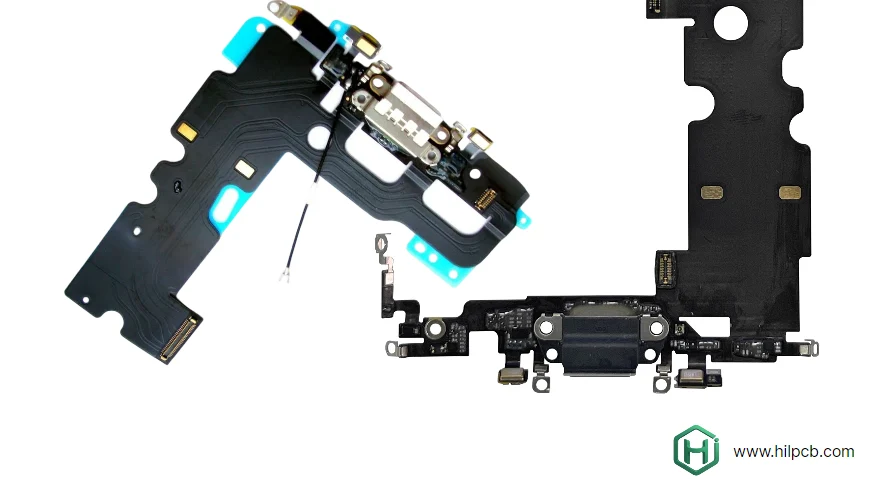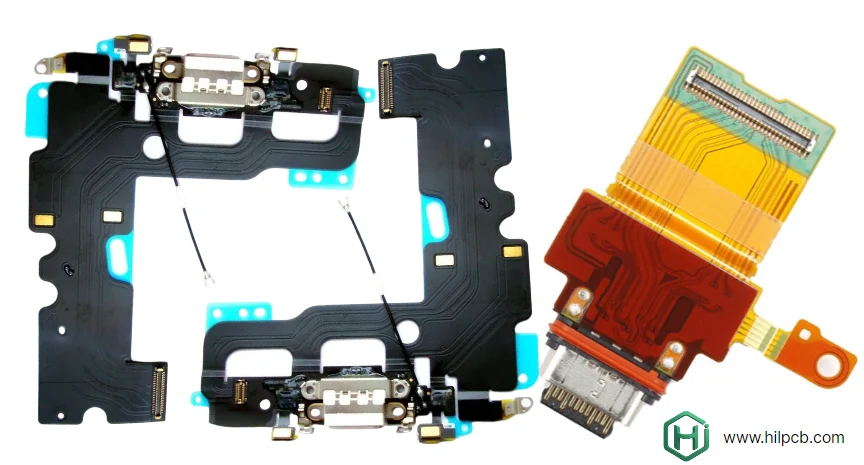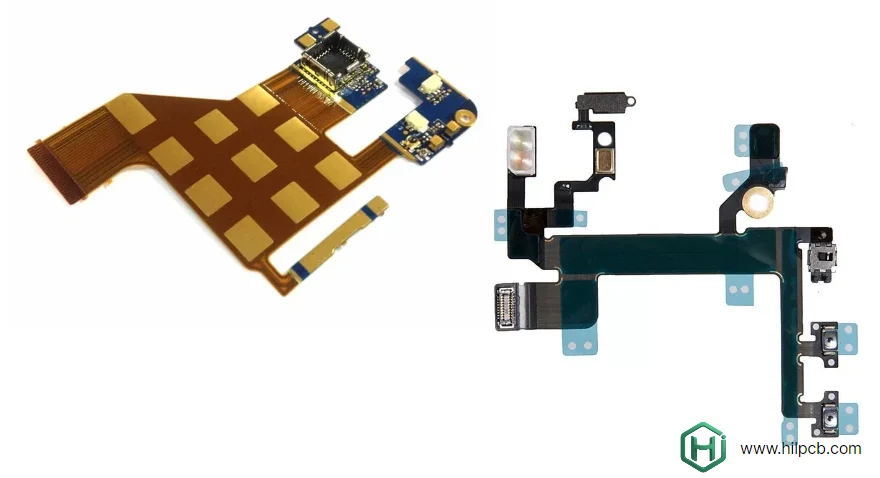Manufacturing the flexible circuit is only the first step toward a finished product. At HILPCB, we provide comprehensive flex PCB assembly services transforming bare flexible circuits into complete, tested assemblies ready for integration into your products. Our specialized equipment, experienced technicians, and optimized processes handle the unique challenges of assembling components onto flexible substrates.
From simple single layer flex PCB assemblies to complex multilayer flex PCB constructions with hundreds of components, our turnkey assembly capabilities deliver quality results on schedule and within budget.
Unique Challenges of Flexible Circuit Assembly
Unlike rigid FR4 PCB assembly, flex PCB assembly presents distinctive challenges requiring specialized solutions:
Substrate Flexibility Management
Warping and Distortion: Flexible substrates lack inherent rigidity:
- Thermal expansion during reflow causing warping
- Component weight creating substrate sagging
- Vacuum pickup potentially damaging thin circuits
- Solution: specialized fixturing providing support
Dimensional Changes: Polyimide substrates exhibit thermal expansion:
- Temperature variations affecting placement accuracy
- Vision system compensation required
- Fiducial-based real-time adjustment
- Climate-controlled environment maintaining stability
Mechanical Support Requirements: Strategic reinforcement ensures successful assembly:
- Stiffeners in component mounting areas
- Temporary carriers for handling
- Custom vacuum fixtures
- Adhesive securing during processing

Advanced SMT Assembly Capabilities
Specialized Equipment and Processes
HILPCB's SMT assembly facilities are optimized for flexible circuits:
Solder Paste Printing:
- Custom stencils accounting for substrate flexibility
- Thinner stencils (0.10-0.12mm) for fine-pitch components
- Print parameters optimized for polyimide surface
- Vacuum hold-down during printing preventing movement
Component Placement:
- High-speed placement for passive components (0201, 01005)
- Precision placement for fine-pitch ICs (0.3mm pitch BGAs)
- Vision systems with fiducial recognition
- Vacuum nozzle selection preventing substrate damage
- Force control preventing flexible substrate depression
Reflow Soldering: Thermal profile optimization critical for flex substrates:
- Lower thermal mass requiring profile adjustment
- Preheat rate control preventing warping
- Peak temperature: 240-260°C (SAC305 solder)
- Time above liquidus: 60-90 seconds typical
- Cooling rate control preventing thermal shock
- Nitrogen atmosphere option for high-reliability
Selective Soldering: Through-hole components and connector installation:
- Point-to-point selective soldering
- Mini-wave selective process
- Proper preheat preventing substrate damage
- Flux residue cleaning compatibility
Fixturing Solutions
Vacuum Fixtures: Most common support method:
- Custom-machined fixtures matching circuit contours
- Vacuum ports positioned avoiding critical areas
- Quick-change designs supporting multiple products
- Release mechanisms preventing substrate damage
Pallet Systems: Supporting circuits through multiple processes:
- Aluminum or steel pallets with circuit cavities
- Heat-resistant materials for reflow compatibility
- Registration pins ensuring consistent positioning
- Reusable for production volumes
Temporary Adhesive: Alternative for complex shapes:
- Heat-resistant tape securing to carrier plates
- Clean removal without residue
- Suitable for prototyping and low volumes
- Labor-intensive limiting high-volume use
Component Selection and Placement Strategy
Design for Assembly Considerations
Component Package Selection: Optimal packages for flexible substrates:
- Smaller, lighter components reducing mechanical stress
- Standard SMT packages (QFN, BGA, LGA)
- Avoid large, heavy components on flex sections
- Consider component height in folded configurations
Stiffener Design: Essential for component support:
- Extend beyond component footprints (2-3mm minimum)
- FR4 PCB or polyimide reinforcement
- Thickness matching component weight and assembly process
- Precision placement (±0.1mm tolerance)
Component Placement Zones:
- Static Zones: All components, stiffeners, connectors
- Transition Zones: Minimal components, strain relief
- Flex Zones: Absolutely no components for dynamic flex PCB
Double-Sided Assembly
Double layer flex PCB with components both sides:
Sequential Processing:
- Top-side assembly and reflow
- Flip and bottom-side assembly
- Second reflow with top components already attached
- Component selection considering thermal cycling
- Adhesive options for heavy bottom-side components
Thermal Considerations:
- Components must survive multiple reflow passes
- Top-side component height vs. fixture clearance
- Solder joint integrity after second reflow
- Warpage management critical for success

Quality Control and Testing
1. Inline and Visual Inspection
Every dynamic-flex PCB undergoes multi-stage inline inspection to guarantee assembly precision. Automated Optical Inspection (AOI) detects solder bridges, tombstoning, and orientation errors in real time, while X-ray inspection ensures hidden joints (BGAs, QFNs) meet quality standards through void and alignment analysis. For complex or prototype builds, manual visual inspection provides final verification and cosmetic assessment to ensure zero-defect delivery.
2. Electrical Validation
Electrical reliability is confirmed through In-Circuit Testing (ICT) for shorts, opens, and component polarity; Flying Probe Testing for flexible substrates and prototypes without dedicated fixtures; and Functional Testing that powers up the assembly to validate interfaces, signal integrity, and performance compliance — ensuring every circuit functions exactly as designed.
3. Reliability and Endurance Testing
For demanding environments, environmental testing simulates temperature cycling, humidity, and vibration. Flex endurance testing evaluates long-term reliability of bendable PCBs and foldable PCBs under repeated motion. Burn-in testing subjects boards to prolonged elevated temperatures to detect early-life failures, confirming product stability before shipment for high-reliability industries.
Box Build and Final Assembly
System Integration Services
Our box build assembly capabilities include:
Mechanical Assembly:
- Enclosure integration and fastening
- Battery pack installation
- Display and touchscreen assembly
- Button, switch, and LED installation
Cable and Wire Management:
- Harness routing and securing
- Connector mating and testing
- Strain relief implementation
- Cable tie and adhesive application
Final Product Testing:
- End-to-end functional verification
- User interface testing
- Communication protocol validation
- Regulatory compliance testing
Packaging and Logistics
ESD Protection:
- Anti-static bags and packaging
- Moisture barrier bags for sensitive components
- Desiccant inclusion for humidity control
- Labeling per customer requirements
Quality Documentation:
- Test reports and certificates of conformance
- Material traceability documentation
- Inspection photos when required
- Packing lists and shipping documentation
HILPCB — Full-Spectrum PCB Manufacturing & Flex PCB Assembly Experts
At HILPCB, we provide complete PCB manufacturing and assembly solutions — covering rigid, flexible, and rigid-flex PCBs under one certified production system. Our flex PCB assembly services integrate precision fabrication, automated SMT placement, and full electrical testing to support next-generation electronics that require flexibility, durability, and high-density performance.
Our manufacturing and assembly capabilities include:
- Comprehensive PCB Fabrication – High-layer multilayer, HDI, flex, and rigid-flex builds, engineered for signal integrity and thermal management.
- Advanced Flex PCB Assembly – Tension-controlled SMT placement, laser alignment, and reflow profiling for flexible circuit boards and polyimide PCBs.
- Turnkey PCB Assembly Solutions – From small-batch assembly prototyping to large-volume assembly, we manage components, fabrication, and testing under one roof.
- Testing & Validation – 100% AOI, flying probe, impedance, and reliability tests ensure every board meets electrical and mechanical standards.
- End-to-End Integration – Complete system builds through box-build assembly, packaging, and supply chain management for ready-to-deploy solutions.
Our ISO 9001, IATF 16949, and UL-certified facilities support industries including automotive, communication, medical, and consumer electronics. Whether you need flex PCB assembly for compact devices or large-scale rigid PCB production, HILPCB delivers precision, consistency, and speed from prototype to mass production.
Frequently Asked Questions — Flex PCB Assembly
Q1: What makes flex PCB assembly different from rigid PCB assembly?
A: Flex PCB assembly requires specialized fixturing supporting flexible substrates, adjusted reflow profiles accommodating lower thermal mass, careful handling preventing damage, and vision systems compensating for dimensional changes. Component placement must avoid flex zones, and testing validates performance in final folded/bent configurations.
Q2: Can you assemble components on both sides of flex PCB?
A: Yes, we provide double-sided assembly for double layer flex PCB using sequential reflow processes. Components must be rated for multiple thermal cycles, and bottom-side component weight may require adhesive depending on package size. Fixturing accommodates top-side component clearance during bottom-side assembly.
Q3: What is the minimum order quantity for flex PCB assembly?
A: We support all volumes from prototype (1-10 pieces) through production (10,000+ pieces). Small batch assembly uses manual or semi-automated processes; large volume assembly employs fully automated lines optimizing efficiency.
Q4: Do you provide turnkey flex PCB assembly services?
A: Yes, our turnkey assembly includes complete supply chain management from bare flex PCB through component sourcing, assembly, testing, and packaging. We handle procurement, inventory management, and logistics—providing single-point responsibility for your project.
Q5: What certifications does HILPCB maintain for flex PCB assembly?
A: We are ISO 9001:2015 and IPC-A-610 Class 3 certified. Industry-specific certifications include ISO 13485 (medical devices), IATF 16949 (automotive), and AS9100 (aerospace/defense). Our quality systems support complete traceability, documentation, and compliance with customer-specific requirements.

